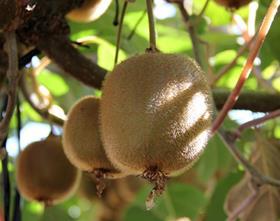
Chilean kiwifruit exporters fared considerably better in 2017 than in recent seasons thanks to a lower supply of Northern Hemisphere fruit and the shorter New Zealand crop.
Publishing a summary of the season, the Chilean Kiwifruit Committee said shippers had benefited from a clearer market at the start of the season, which allowed for a favourable entry and acceptance of Chilean fruit and kept sales brisk throughout the season.
Average prices were more than 50 per cent higher than in 2016.
“The lower supplies of both local and imported kiwifruit in major markets earlier this season, along with the overall good quality and condition of the Chilean fruit, boosted turnover from the start through to the end of the season, and allowed Chilean Hayward to obtain higher values than last season,” CKC said.
Up to week 39, Chile had exported 170,214 tonnes of kiwifruit, 2 per cent less than at the same point last year and similar to the 170,000-tonne estimate released at the start of the 2017 season.
In Europe – the main destination absorbing 33 per cent of Chile’s export volume –medium and smaller sizes of Chilean fruit dominated the market and sold at a fast pace throughout the season.
Prices were stable and tended to rise after week 25, reaching a maximum of US$2.70 per kg in week 35. The season’s average price was US$1.98 per kg across all sizes, a 56 per cent increase on 2016.
Average prices across the season were also up in China (+16 per cent) and the US (+27 per cent).
While shipments to Europe (excluding Russia) rose by 9 per cent, and exports to Russia were up 10 per cent, volumes to all other markets fell.
Sendings to Asia and Latin American markets finished 14 per cent and 11 per cent down respectively. The Middle East also registered a fall of 7 per cent while the volume sent to the North American market remained stable.
“In volume terms the European market had a very relevant role this season, not only for being the main destination for Chilean kiwifruit but also for being the only market with an increase in volumes from the previous season,” CKC noted.
Looking ahead to the 2018 season, the committee said that early estimates suggested that production would be slightly lower and close to this year’s 170,000-tonne export total.
“The production trend shows a slight downward movement. Although plantations have been rooted out, they corresponded mostly to old and poor-yielding orchards, so the total production has not been greatly affected,” the committee said.
Northern Hemisphere production of green kiwifruit is also projected to drop due to spring frosts and an increase in volume of yellow kiwifruit from new plantations.



